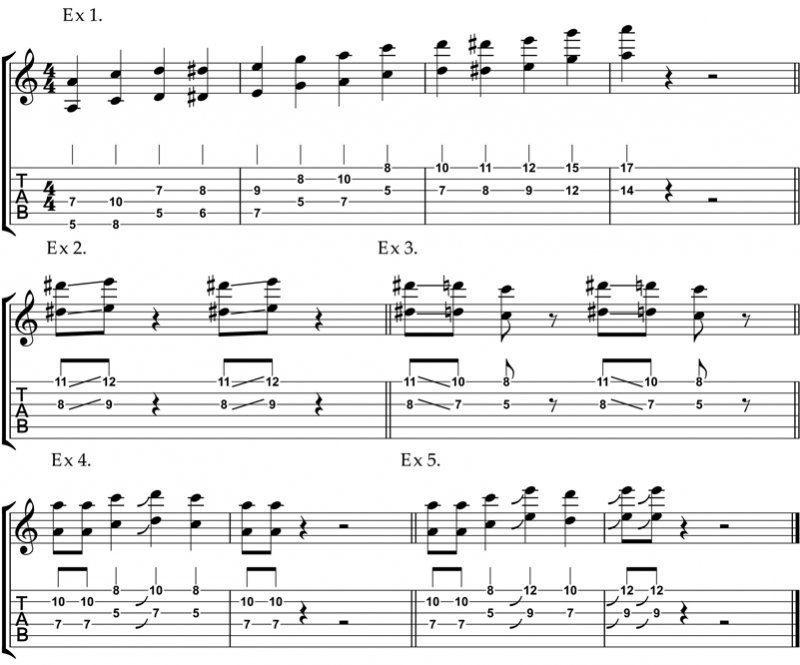Guitar Cool: Octave Licks
Guitar Cool: Octave Licks
Guitar players are always borrowing ideas from each other no matter what genre of music they are involved in. In the 1960s jazz guitarist Wes Montgomery made the playing of octaves famous, then during the 1970s jazz/funk/blues guitarist George Benson worked with what Wes had done and took it a step further.
Since then many others have taken what George was doing and taken that a step further as well, and so it goes on. Music and its various techniques are evolving all the time, which makes music and learning it very fascinating – you don’t know what is going to happen next, or what to expect.
Octaves, like most other guitar techniques, require a bit of practising to get them comfortably in your head and your hands, but once you have got it you will have a lot of fun using them in your solos, fills, and back-ups.
One of the difficult things about playing octaves is muting the unwanted strings. You do this by muting the higher strings with the underside of your 4th finger that is playing the higher sounding strings, and muting with underside of your 1st finger that is playing the lower sounding strings. You normally only use your 1st and 4th fingers for playing octaves.
Exercise 1 is the blues scale played in octaves. This scale might take you a while to get going well, depending on your abilities and experience, but stick with it as it will eventually become easy. Make sure you are using the correct fingering and are damping the strings as outlined in the previous paragraph.
For the right hand technique you can brush across the strings using your thumb like Wes Montgomery did, or you can pick the notes using a strumming action with your strumming hand. The strings in between will be muted by the undersides of you fretting fingers. You can also use a finger style technique where you play the two strings with your thumb and middle finger while not having to worry about muted strings. This technique sounds quite different to the strummed ones and is more piano-like.
Once you have the blues scale going really well, and you can play it without any of the unwanted strings ringing, then it is time to look at Exercises 2-5 which are just a few octave type licks that you hear a lot of guitar players use.
Exercise 2 is a lick that slides into the fifth from the bluesy D# note below it. Make sure to get the slide going very smoothly. This lick and the following ones will sound great over an Ami vamp, or anything bluesy in the key of A.
Exercise 3 is a lick that uses the bluesy note D# again and slides down into the D natural and ends on the note C which is the 3rd .
The lick in Exercise 4 is a bit trickier than the previous two and requires a slide up to the D from the C note below it.
Exercise 5 is similar but uses different notes. You need to slide smoothly into the high E. Once you have this lick going well you can combine licks 4 and 5 to make a longer line should you need it.
Once you have these licks going well it is time to figure out where you can use them in your music. There isn’t any genre where they can’t be used so you just need to be a bit imaginative.
Kevin Downing is a professional guitarist, teacher and author. He can be contacted through his website at www.guitar.co.nz or PO Box 4586, Palmerston North 4442. Tel (06) 357 0057

